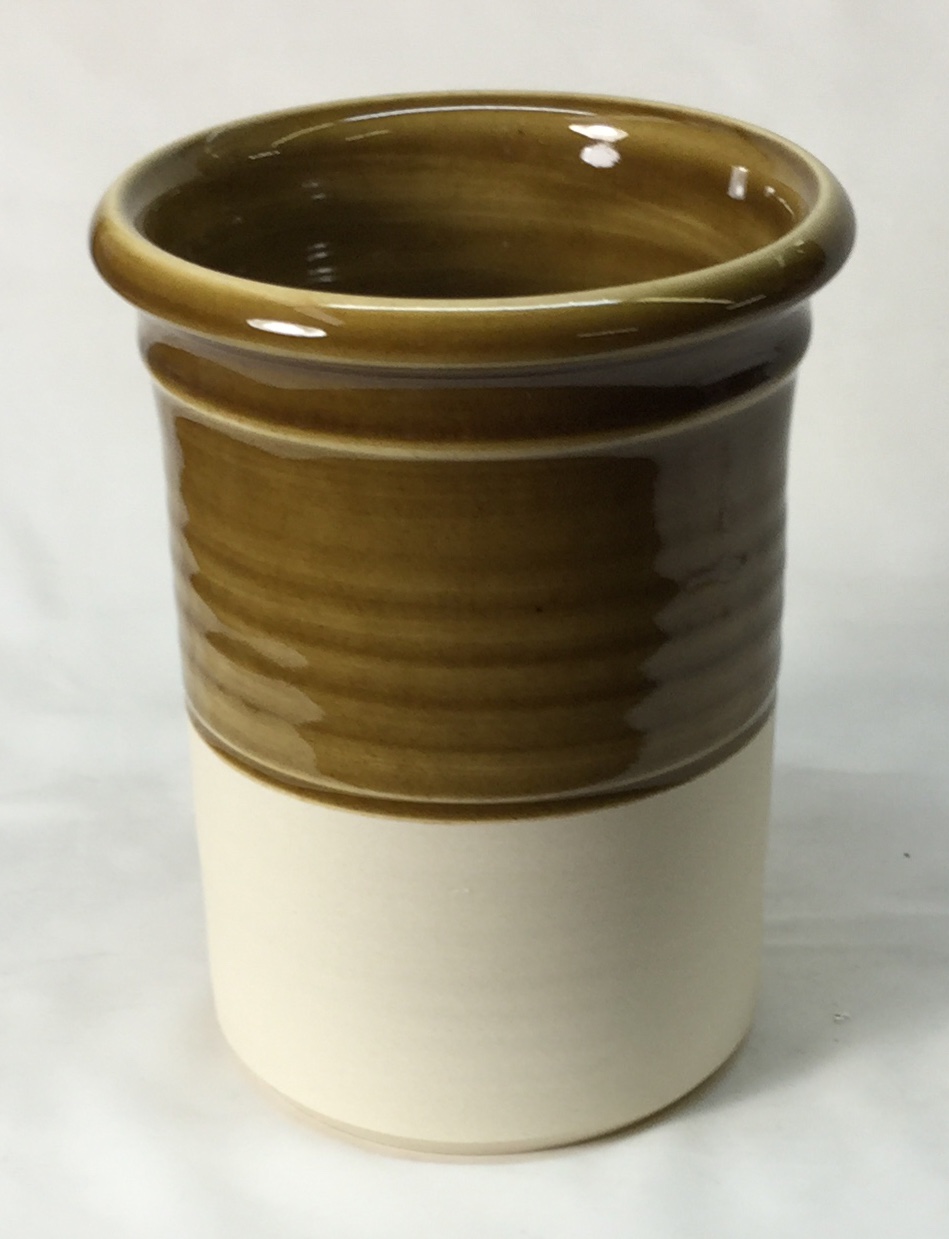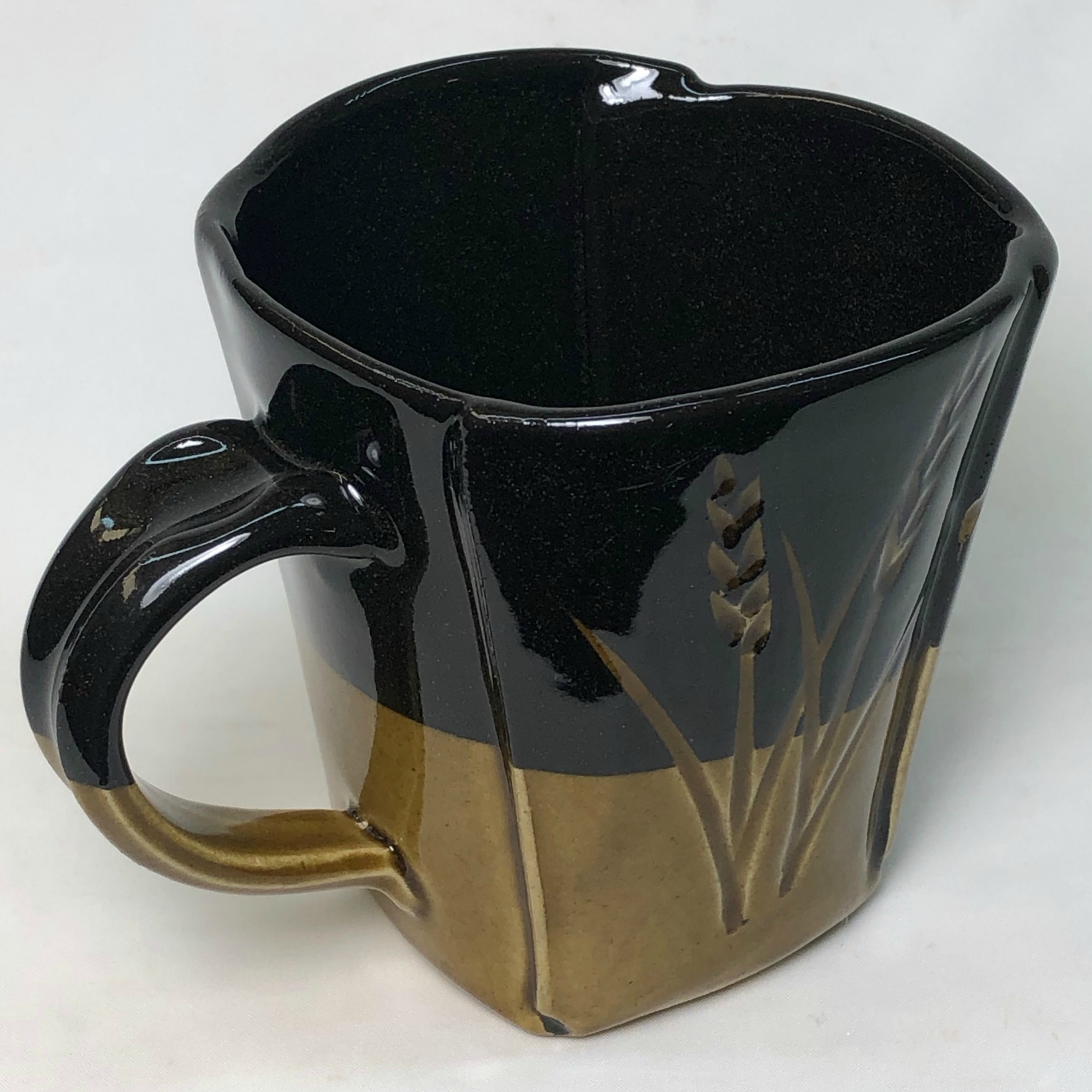Home
Glazes, Engobes
GA6-B Alberta Slip Cone 6 Base
Description
The base cone 6 glaze recipe, it is just 80% Alberta Slip and 20% Ferro Frit 3195. It produces a well-melted amber/honey base transparent. We document procedures to mix this as a brushing glaze, dipping glaze or base coat dipping glaze.
Transparent glaze of choice for dark bodies
The amber color and micro-bubble-free matrix make GA6-B work very well.
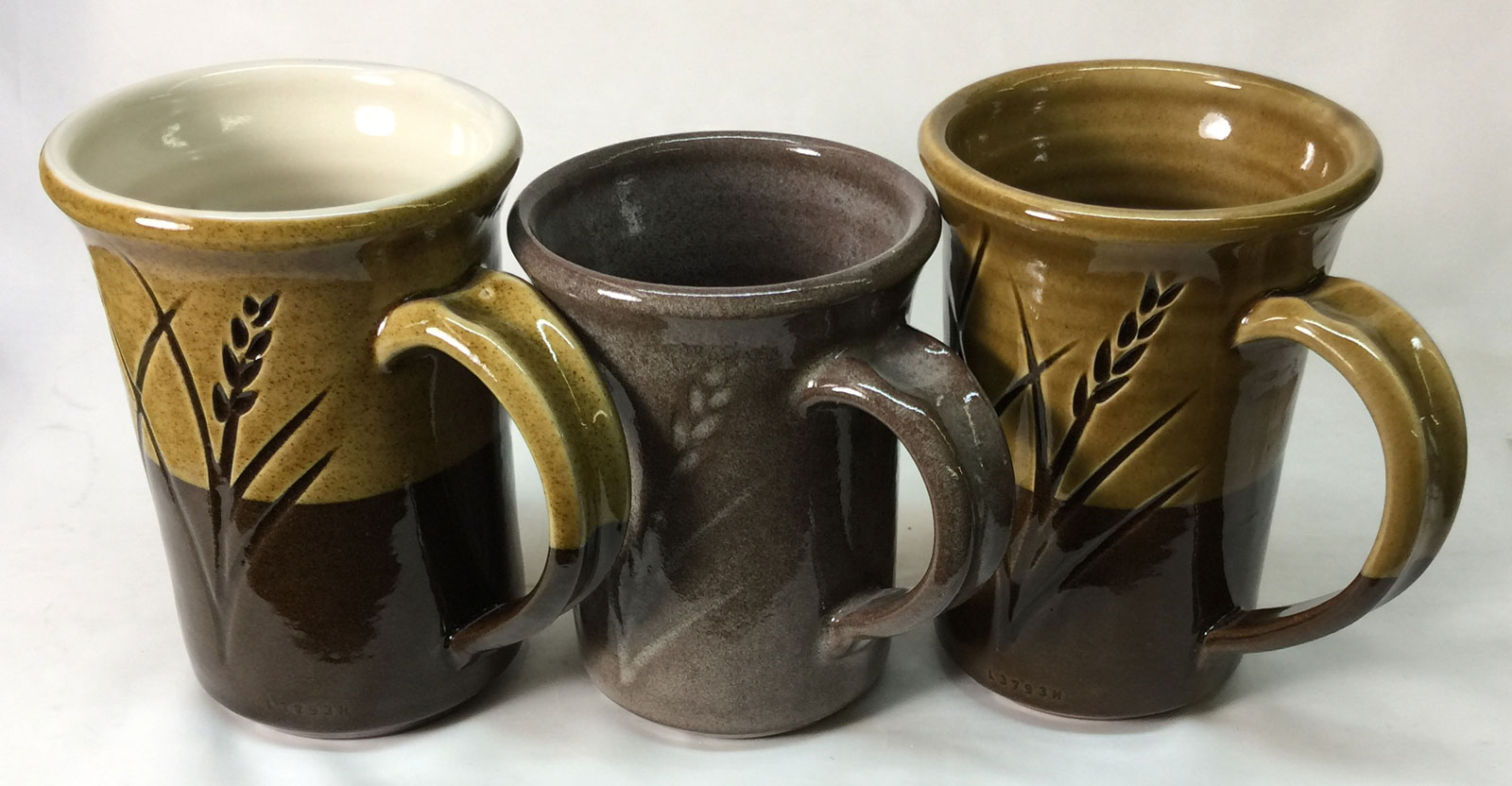
Clear glazes often do not work on our dark burning bodies (like M390, Coffee Clay). The center mug is clear-glazed with G2926B (and is full of bubble clouds).
Left mug: The outside glaze adds 4% iron to G2926B (the iron particles are acting as a bubble fining agent). Right mug: The whole thing is glazed with GA6-B Alberta Slip base glaze.

Coffee Clay fired at cone 6 with transparent glazes. The Alberta Slip GA6-B glaze (left) is clearly better that the G2926B on the right. This firing is schedule C6DHSC, a 100F/hr slow cool to 1400F. The glaze is the right certainly has fewer bubbles than normal, but still is not nearly as good as the one on the left.
Firing
It is standard practice to fire this at cone 5-6 using a hold and slow cool to produce a defect-free super-gloss surface (we recommend the PLC6DS schedule).

The GA6-A glaze on the insides of these mugs has crystallized during cooling. This happens because of the use of Frit 3134 instead of 3195 and because of the C6DHSC firing schedule (it drops at 150F/hr down to 1400F).
Glazing
When mixed with water to create a thixotropic slurry, this will perform was as a dipping glaze. It will apply evenly to bisque, produce minimal dripping and dry within seconds. It will be adequately durable for handling. If bisque walls are thin, it will be necessary to glaze the inside and outside of pieces as separate operations (with a drying time between).
If you are glaze layering (using this as a dipping glaze and painting a commercial gummed brushing glaze over it) there is a risk of crawling. It may be necessary to add some gum to this, converting it from a dipping glaze to a base-coat dipping glaze.
Glaze Recipes
More information about this recipe can be found at digitalfire.com, click the following: GA6-B. See also the Alberta Slip page. A mix of raw/roast Alberta Slip powder must be used as explained below.
This glaze is most often prepared using the traditional method of simply adding water until the desired consistency is achieved (do the initial mix with 85 parts water and 100 powder). We find that 1.45 specific gravity works for us using our tap water. No flocculant additions are generally needed and application properties are very good as long as the slurry is not too viscous or too runny (dries quickly on bisque without cracking and, after dipping, there is minimal dripping).
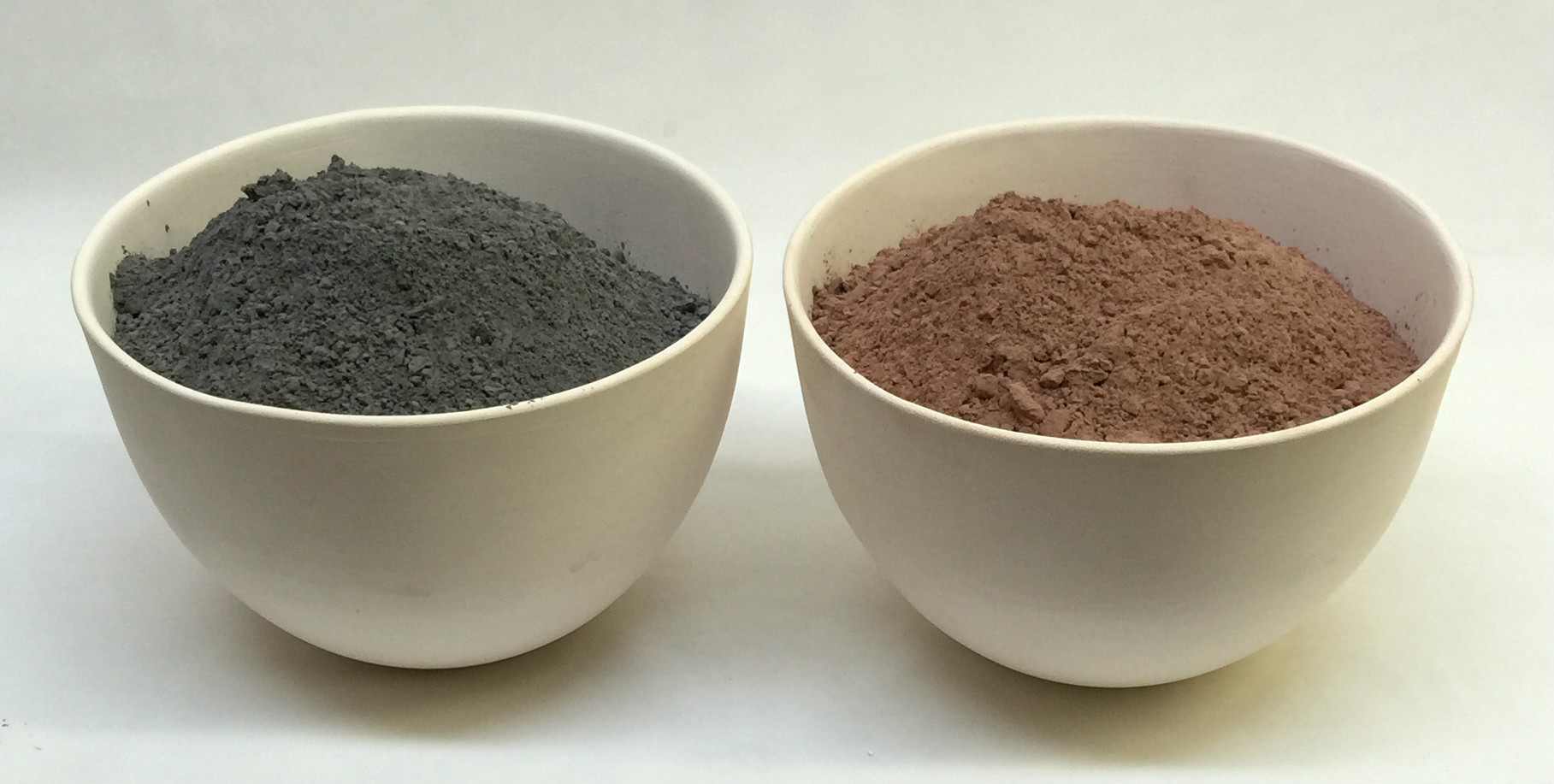
Left: Raw Alberta Slip powder. Right: Roasted at 1080F. This is a plastic clay, thus it has a significant drying shrinkage. Where a glaze is applied thickly or the percentage of Alberta Slip is high, shrinkage cracks (which produce crawling during firing) will occur. We recommend a mix of roast and raw material in recipes. Roasting the Alberta Slip powder at 1000F greatly reduces the shrinkage. Use a firing rate and hold-time-at-1000F appropriate for the wall thickness and size of your bisque vessels (e.g. 500F/hr and 30 minutes for thin walled small vessels, slower and longer hold for large ones). If any of the powder within is black, increase hold time. Adjust proportions as needed (more roast if the glaze cracks on drying or more raw if it is drying too powdery or not bonding well).
The roasted material has a weight-loss of about 3% on firing (vs. 9% for the raw powder). This difference can be ignored in most cases. But, to be more precise, use 3% less of the roasted powder (multiply the amount by 0.97). For example, suppose you need 1000 grams of a 50:50 raw:cacline Alberta Slip mix for a glaze recipe. Use 500 raw and 500*.97=485 roast.
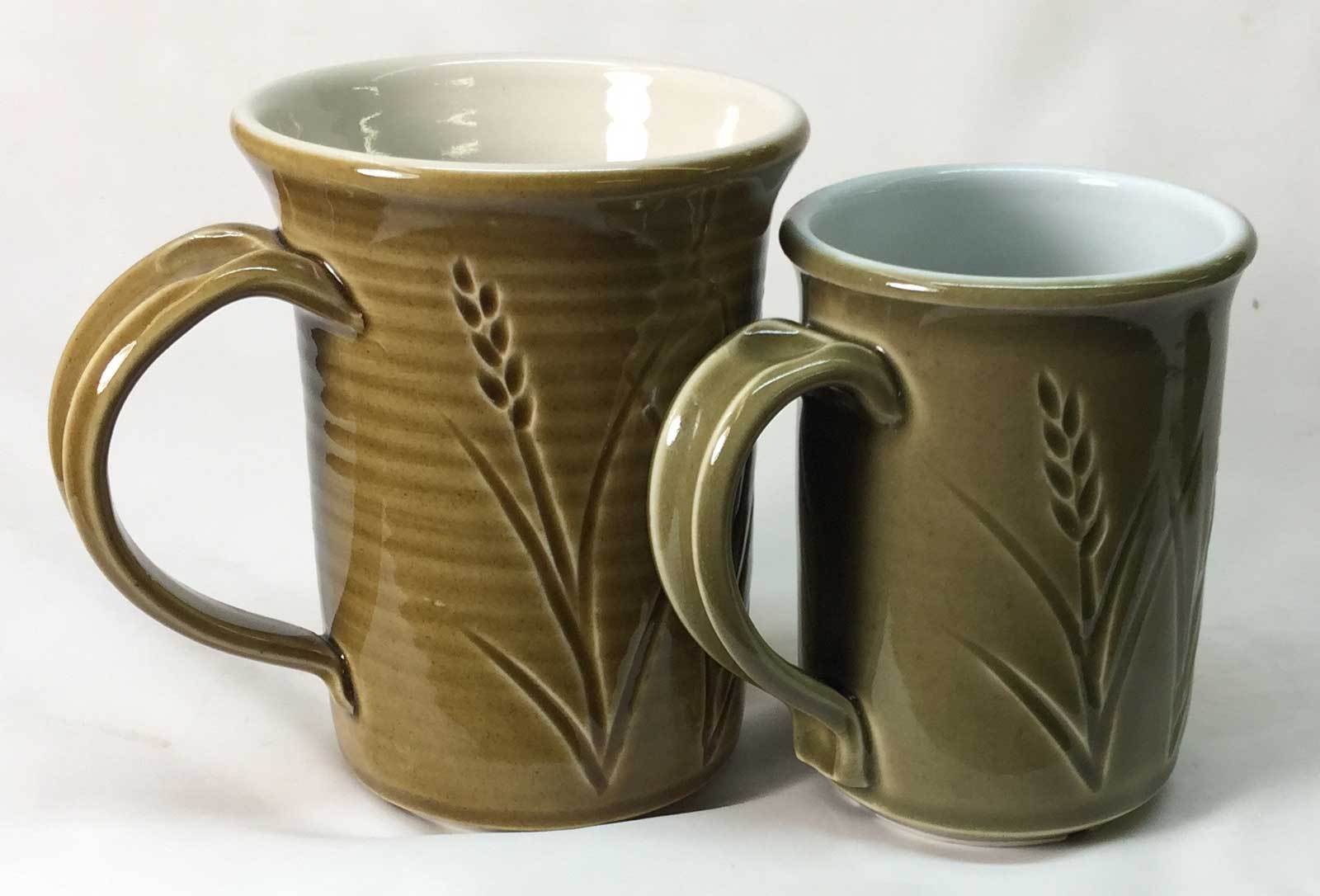
Alberta Slip as a celadon at cone 6 (left), cone 10R (right). The left recipe is just the base GA6-B on Plainsman M370. The other is Alberta Slip/Ravenscrag Slip 50:50 mix on Plainsman P700.
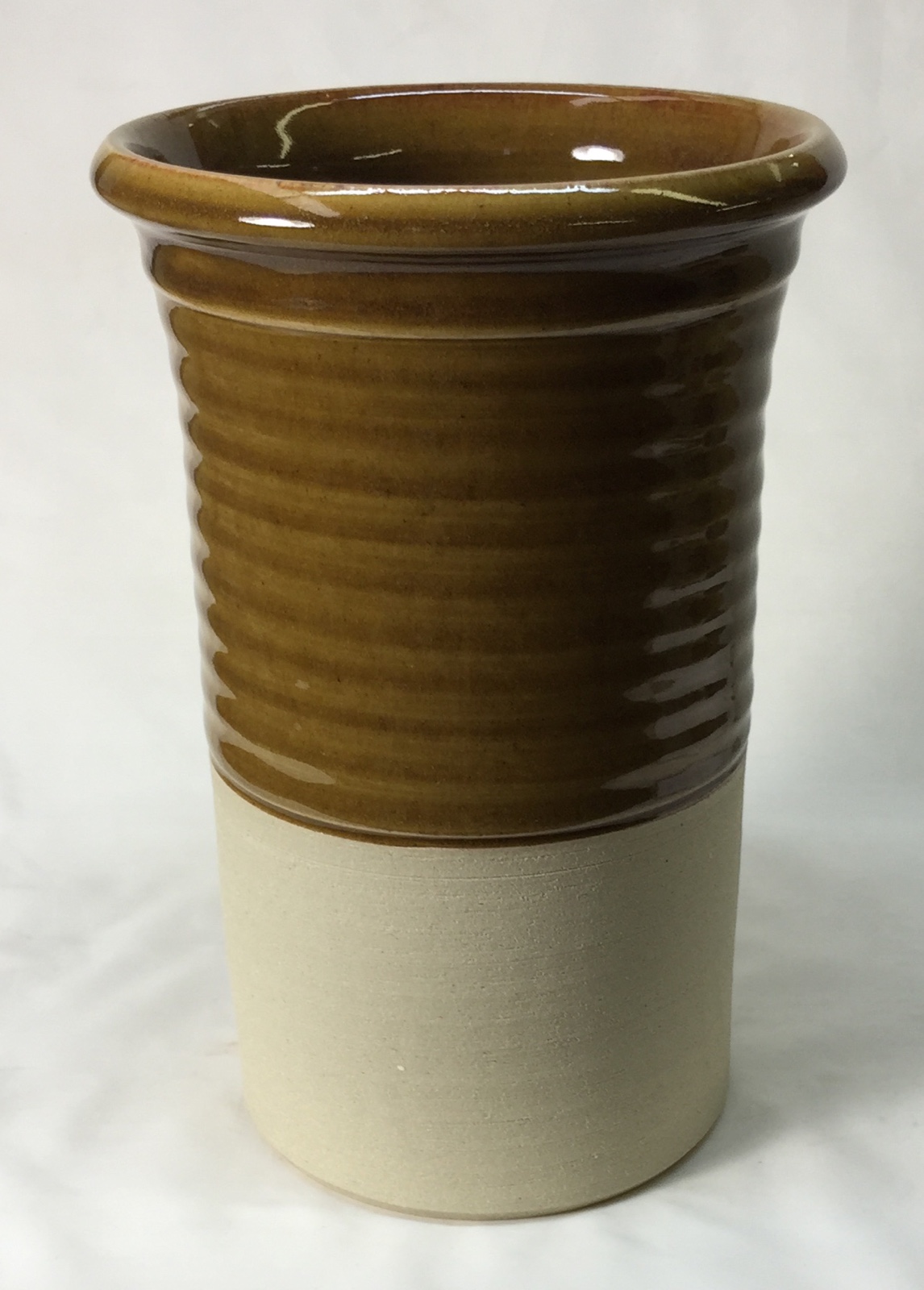
M340 with GA6-B base Alberta Slip glaze (employs frit 3195 instead of 3134). A slow cool produces a flawless surface.
Gallery
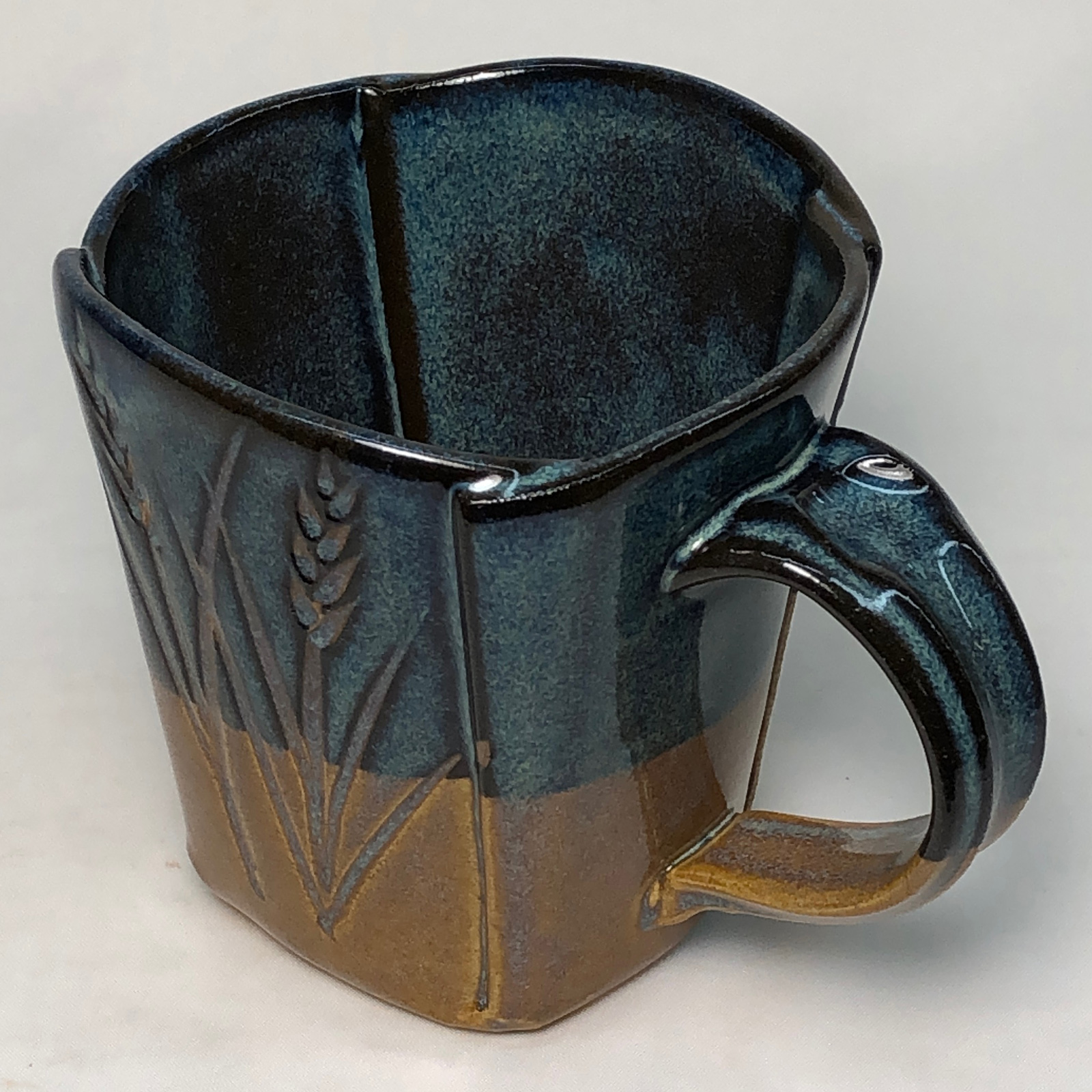
M340 with Alberta Slip GA6-C rutile blue glaze. Cone 6. L3954B black engobe was applied inside and half way down the outside during leather hard stage.
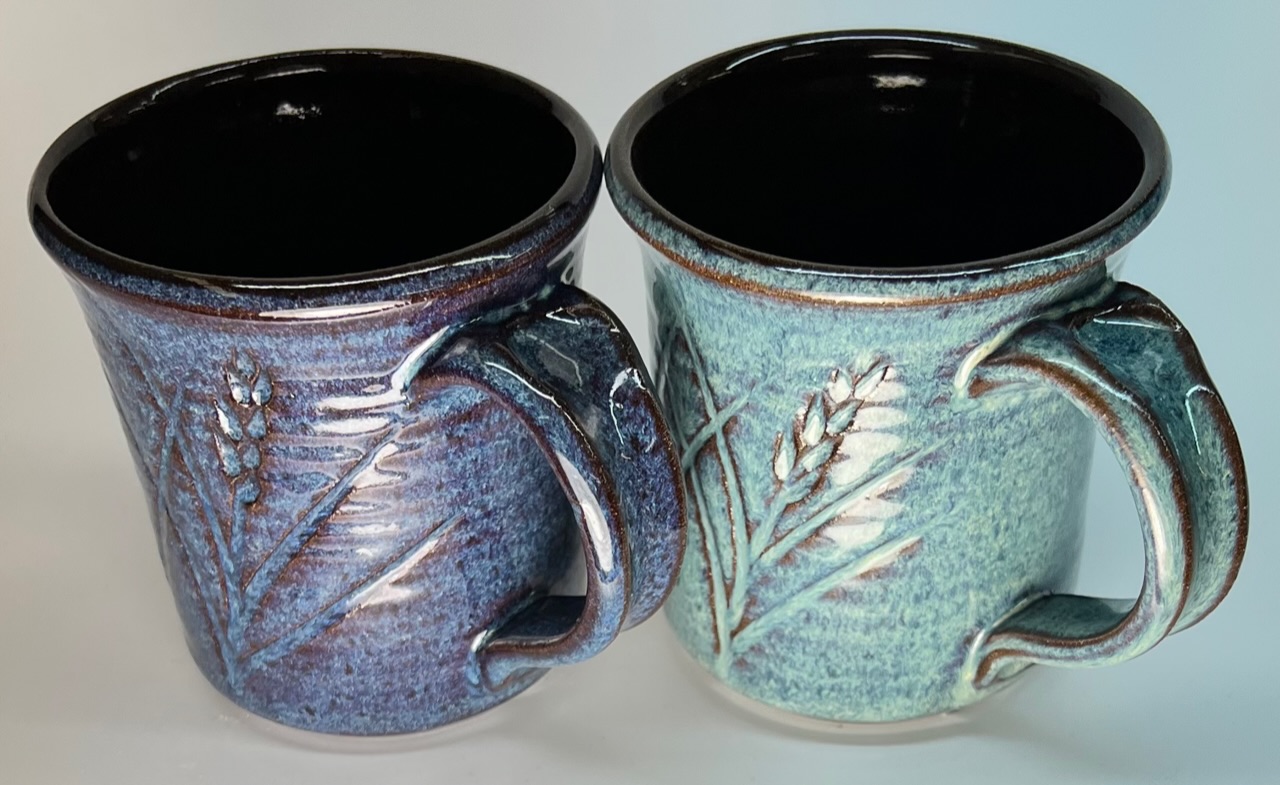
Coffee Clay with GA6-C rutile blue (it is GA6-B + 4% rutile). The one on the left was fired with the PLC6DS drop-and-hold firing schedule, the one on the right with the C6DHSC slow cool schedule. The slow cool gives a better blue and produces a more glassy finish on the inside GA6-B.
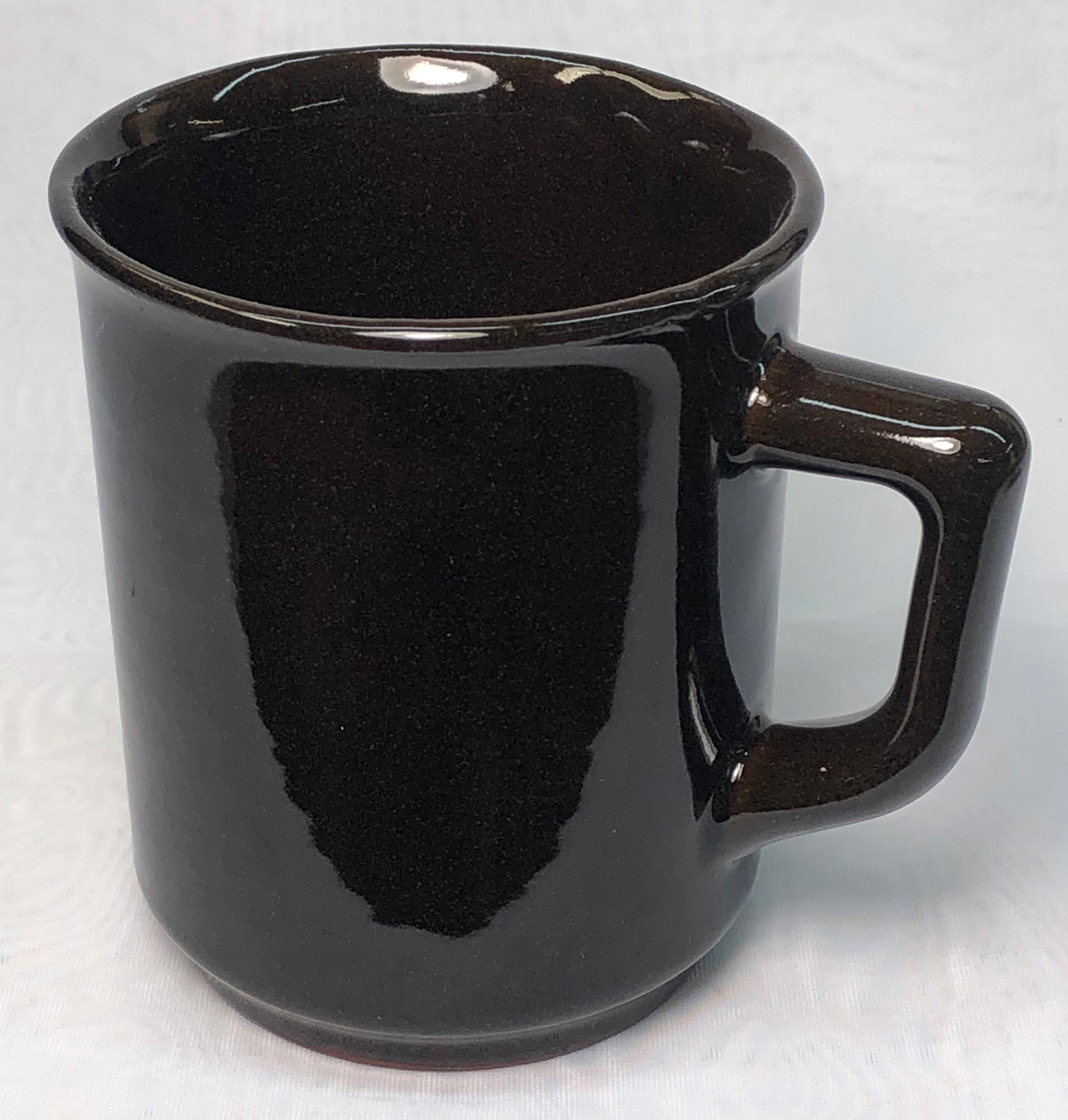
GA6-B glaze with 2% added iron oxide. Fired at cone 6 using the C6DHSC schedule. Color is almost black.
